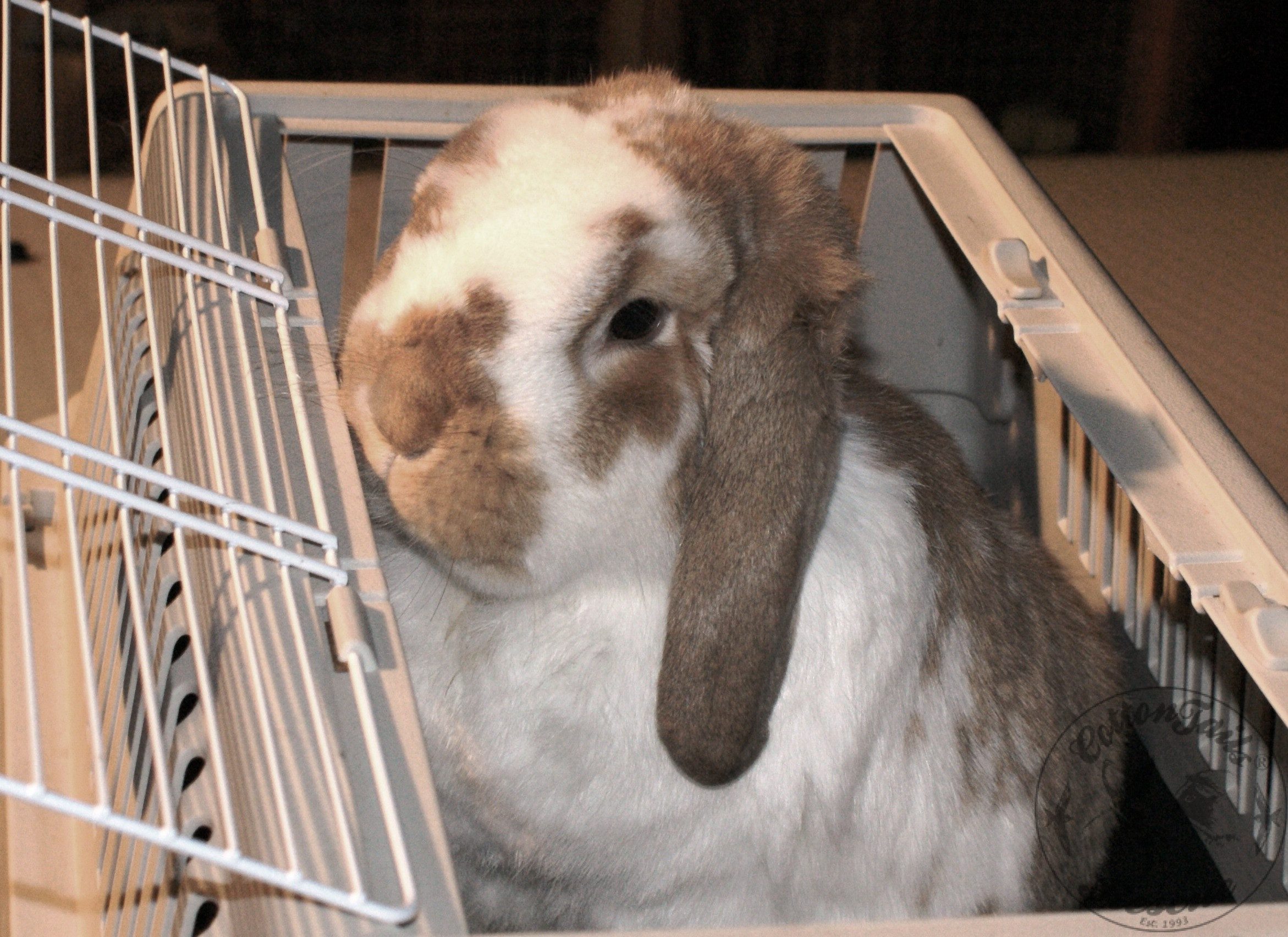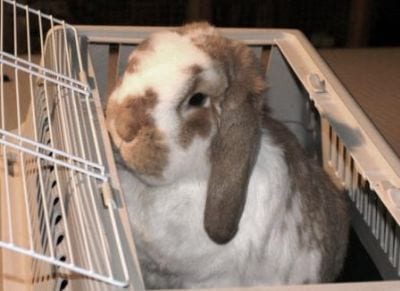CottonTails now carries out all rehoming directly from the owners – the Direct Rehoming Service. People who want to find a new home for their rabbit or guinea pig are invited to contact me by email or Facebook PM, and I can list the pet on the website and Facebook page and invite suitable new homes to come forward. To do this, I need the following information:
- Your contact telephone number and name
- Details of the rabbit or guinea pig – gender, age, description, health or behavioural issues, neutering status, vaccination status, and a sentence or two about the personality. It would be best if you were completely truthful about all aspects of this; it is essential as the success of the new home depends on it.
- Reason for rehoming
- Photos of the rabbits or guinea pigs, and a short film if possible
Once I have the information from you, I will then add the details of the rabbit or guinea pig to the website and Facebook page, omitting your details. I will directly pass on the details of any possible new home to you, and you will take it from there. A donation to CottonTails would be appreciated if the rehoming is successful, but there is no charge for this service nor any adoption fees.
CottonTails offers a grant of £60 towards the neutering costs of any rabbit adopted through this service, and likewise £40 towards the vaccinations costs. Both are payable to the veterinary practice that will carry out the procedures, chosen by the new owner to suit their location and vet preferences.
CottonTails will not be responsible for the animal should the new home fail, nor can we guarantee the animal’s health or personality to a new owner. We provide a platform so the unwanted animal can be viewed, and the rest is down to you, the owner. The animal would stay with you throughout the process; ultimately, it is your decision whether to rehome the animal.
Here is some general advice before you try to rehome your rabbit.
If the decision has been made that your rabbit is to be found a new home and you have not been able to re-home them through family or friends, your first task will be to locate a good rabbit rescue. This can be done by speaking to your local vets or by going online to see what rescue centres are local to you. Not all rescues are of a high standard, and it is important to find this out to prevent your rabbit from being exploited or ill-treated. A good rabbit rescue should neuter and vaccinate all their rabbits. It should have appropriate home-checking procedures to ensure the new home will be caring, knowledgeable and permanent.
On the basis that you have managed to find a good rescue centre to accept your bunny, you then need to transport the rabbit safely and with the minimum of stress. For this, you will need a pet carrier of suitable size to accommodate the type and number of rabbits concerned. You may be able to borrow one if you don’t own one already.
The carrier should be enclosed so the rabbit feels safe, but it should allow plenty of air to circulate to stop the rabbit from becoming too hot. Plastic carriers are ideal, but if you use the wire mesh type, you may have to put a towel over the top, leaving the ends free. Line the carrier with newspaper or a towel, and place hay on top so the rabbit has the choice to nibble during the journey. However, check that the hay is clear of any long strands, as an active, anxious rabbit can get a solid twist of hay stuck securely around a back foot to the extent that it can cut into the flesh. Don’t use wood shavings in the carrier as it can get into the eyes during a journey.
Do not attach a water bottle to the front during the journey! This will only result in an empty bottle and a wet rabbit. If the journey is a long one or the weather is hot, stop during the trip and offer water to the rabbit, taking the bottle or bowl away again before you move off. Make sure the carrier is secured so that it does not slide about, and give some thought to its position in the car, especially in warm weather, to prevent the rabbit from overheating.
Bring some of the food the rabbit is used to having so that the rescue centre can mix it with the brand they use. This helps prevent digestive upset as the rabbit will be stressed enough with the move, never mind changing the diet. Write down all the relevant details of the rabbit, such as age, name, vaccination history, neutering status, any special needs, and whether they are used to fresh vegetables. All this information will be beneficial to the rescue centre.
Most rabbits do not seem to mind who looks after them. Although they do get used to certain routines, they can adapt quickly to new environments so long as their basic needs are being met: feeling safe, having company, having plenty of room to exercise at will, being fed the correct diet, and given physical and mental stimulation, and in good health.
Animal rescue centres are constantly struggling to keep going financially, so it is only fair to donate towards the costs involved when you hand over your pet. The donation could be a sack of food (make sure you buy the brand they recommend) or a large carrier bag of fresh vegetables.
Once you sign your rabbit over, that is the end of your interest, and although you may be able to keep in touch with the centre to find out if they have been rehomed, you will have no say in future decisions, and it is essential to understand that before you start.
Ultimately, it is your decision whether you feel your rabbit is better off with you or whether another home would provide a better quality of life. Think through the decision thoroughly and check up on the rescue centre beforehand. After all, this is the least you can do for your bunny, who has likely done nothing wrong …





